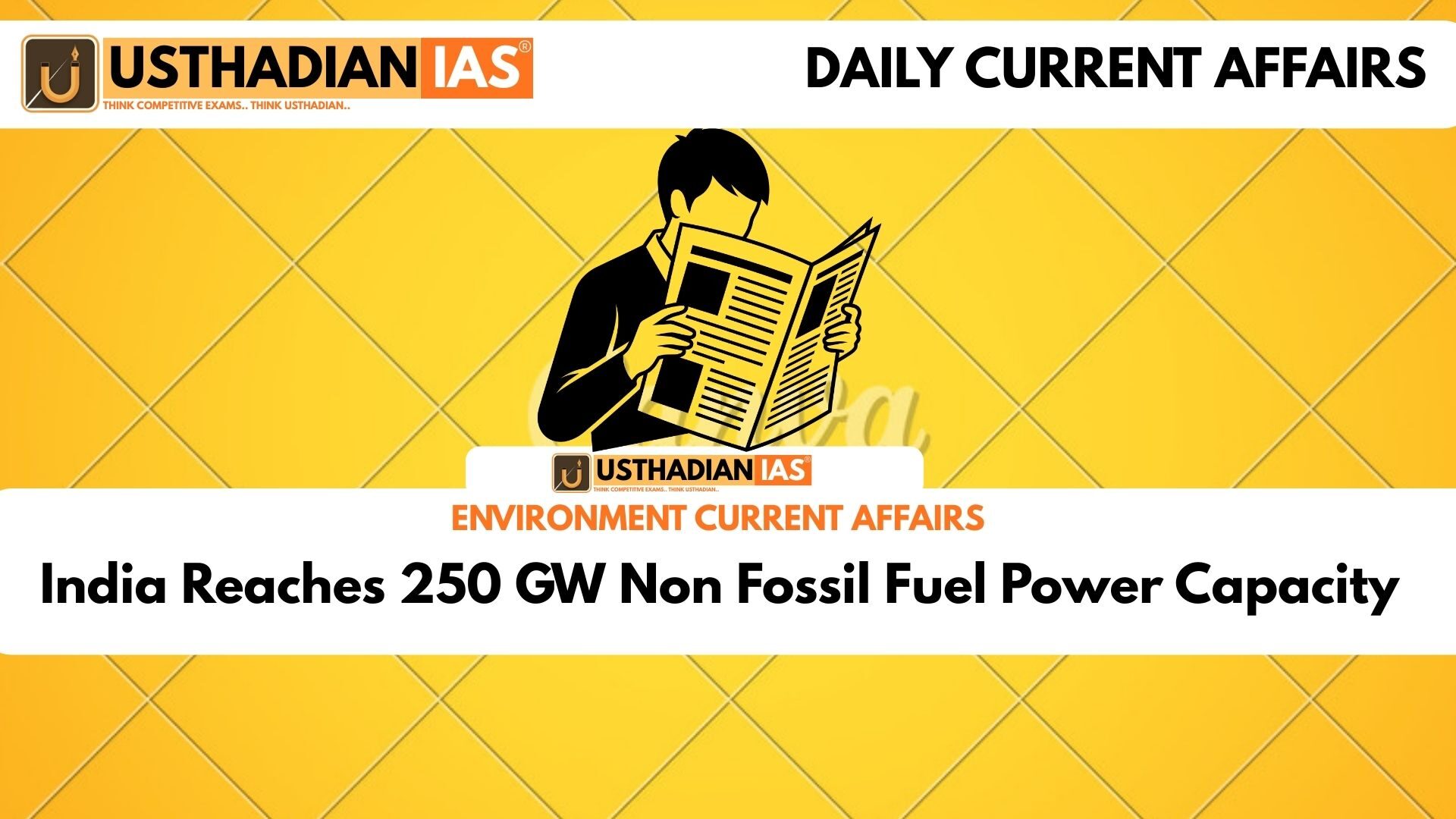India achieves major clean energy milestone
India Reaches 250 GW Non Fossil Fuel Power Capacity: India has officially achieved 250 GW of non-fossil fuel electricity generation capacity, marking a historic milestone in its transition toward a low-carbon energy future. The announcement was made by Union Minister for New and Renewable Energy Pralhad Joshi during the State Review Meeting on Renewable Energy in New Delhi on 11 September 2025.
Static GK fact: India’s first hydropower plant was set up at Darjeeling in 1897.
This achievement strengthens India’s position among the top global leaders in clean energy expansion and aligns with its commitments under the Paris Agreement.
Composition of non fossil fuel power
The 250 GW achievement is composed of multiple renewable and alternative sources. Solar power and wind energy account for the largest share, followed by hydropower, biomass energy, and nuclear power.
Static GK fact: The world’s largest solar park is the Bhadla Solar Park in Rajasthan, India.
This shift reflects a decisive move from fossil-fuel reliance to sustainable power sources, reducing emissions while meeting rising energy demands.
Roadmap for 2030 vision
Minister Joshi emphasized India’s commitment to the 500 GW renewable energy target by 2030. This ambitious goal is supported by robust policies, increasing investments, and strong participation from states across the country.
Static GK fact: India’s total installed electricity capacity crossed 400 GW in 2022.
The target, though challenging, is considered achievable with continued focus on energy security and green growth.
Clean energy and clean nation approach
Highlighting the vision of Swachh Bharat and Swachh Energy, the minister connected environmental health with clean energy progress. Reducing dependence on coal not only mitigates climate change but also improves public health and ensures cleaner cities.
Static GK Tip: India ranks 3rd globally in renewable energy installed capacity, after China and the USA.
Free electricity for households
A key achievement underlined was the utility-led solar model providing free electricity to 20 lakh households. This model benefits those without rooftop ownership by installing grid-connected systems through distribution utilities.
Andhra Pradesh has already submitted comprehensive proposals and shown remarkable progress. The target is to extend this scheme to 1 crore households, ensuring energy equity and empowering rural communities.
Economic impact and NEXT GEN GST
The government also linked clean energy growth with NEXT GEN GST reforms. These measures are expected to boost GDP growth, ease compliance for renewable firms, and create a favorable environment for clean energy investments.
Static GK fact: GST was introduced in India on 1 July 2017 as a unified tax system.
Static Usthadian Current Affairs Table
India Reaches 250 GW Non Fossil Fuel Power Capacity:
| Topic | Detail |
| Milestone achieved | 250 GW non-fossil fuel capacity |
| Announced by | Union Minister Pralhad Joshi |
| Announcement date | 11 September 2025 |
| Location | State Review Meeting, New Delhi |
| 2030 target | 500 GW renewable capacity |
| Free electricity beneficiaries | 20 lakh households |
| Free electricity target | 1 crore households |
| Model used | Utility-led solar model |
| State progress | Andhra Pradesh submitted proposals |
| Policy support | NEXT GEN GST reforms |








